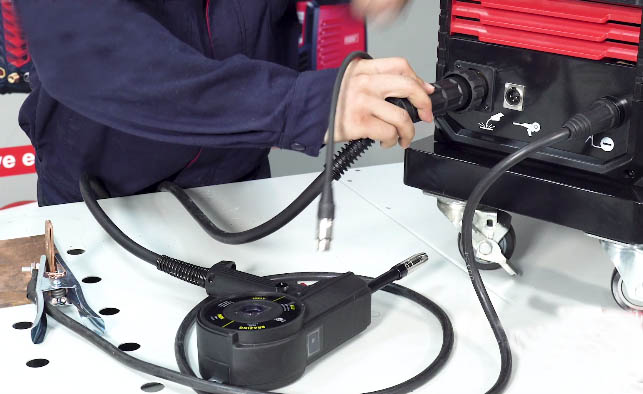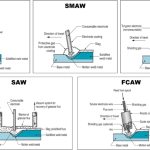Choosing the Right Equipment for MIG Welding Aluminum
When it comes to MIG welding aluminum, there are a few essential tools that you shouldn’t overlook. First and foremost, you’ll need a MIG welder, along with a spool gun.
In addition, specific materials are necessary to work with aluminum, such as special MIG wire and shielding gas.
Completing the list, make sure you have essential safety gear on hand, including gloves, a welding helmet, as well as welding tips and grinder wheels.
MIG Welding Aluminum with a Spool Gun
Welding Town
Selecting the Ideal Spool Gun
If you’re in search of a wide variety of spool gun options, you won’t typically find them at big box stores.
Since aluminum welding is not as common as other types of welding, it’s best to visit a local welding supply store for your spool gun needs. Alternatively, you can explore online shopping for consumables like MIG wire and tips.
When it comes to selecting a spool gun, it’s important to find one that is compatible with your welder. Don’t worry too much about specific brands, as the availability of spool gun options can be limited.
Keep in mind that many entry-level welders often have only one spool gun option anyway.
Wire Types and Sizes for Aluminum Welding
While you’re shopping for a spool gun, it’s a great opportunity to grab some welding wire as well. When it comes to MIG welding, there are two popular choices: ER4043 and ER5356.
Both of these wire types can be used for MIG welding, but don’t forget to also purchase the necessary shielding gas.
For wire thickness, the most commonly used sizes are .030 and .035. Make sure to select the one that matches the tips of your spool gun.
Additionally, consider getting a small roll of wire that fits your spool gun. In most cases, spool guns require 1lb. rolls of wire.
Differences between ER4043 and ER5356 Wire Alloys
Both ER4043 and ER5356 are suitable for MIG welding aluminum.
However, there are some key differences between the two. ER4043 is slightly softer and exhibits better resistance to cracking. On the other hand, ER5356 is stronger but tends to be more brittle.
As a general guideline, ER4043 is often the preferred choice for most aluminum welding tasks. It is easier to work with, particularly for beginners, and offers a non-brittle welding experience.
In cases where a highly robust weld is required, ER5356 is a better option, especially for critical jobs.
It is important to be aware of the specific alloy of the metal being welded. However, this information may not always be readily available, especially when performing repairs.
As a general practice, it is advisable to choose a wire number that closely matches the alloy of the metal being welded.
Preparing for MIG Welding Aluminum with a Spool Gun
Just like in any other MIG welding process, achieving a good weld in aluminum requires meticulous cleaning of the metal surface. Neglecting this crucial step can result in poor penetration and the formation of a porous bead.
The cleaning process for aluminum is similar to that of other metals. However, it is important to note that aluminum requires some additional preparation before you begin welding.
I have rewritten the text in English, ensuring clarity and conciseness while maintaining the conversational tone and adhering to the English language.
Cleaning and Prepping Aluminum Surfaces
Cleaning aluminum is a relatively straightforward process since the metal does not rust. However, it does undergo oxidation, so it’s crucial to pay close attention to those areas.
In most cases, a flap disc is an effective tool for removing debris such as paint and oxidation from aluminum surfaces.
When it comes to polished aluminum, the cleaning process can be a bit more challenging. In such situations, a Scotch-Brite pad used with a die grinder is recommended.
Selecting Proper Shielding Gas
If you’re accustomed to welding steel, you may have a tank of mixed gas containing some Argon. However, I do not recommend using this gas for welding aluminum.
When it comes to MIG welding aluminum, you specifically need pure Argon gas.
However, there are a few other gas mixtures available, including those with Helium. These mixtures are suitable for specific, specialized applications. But for the average welder, pure Argon is the preferred choice.












